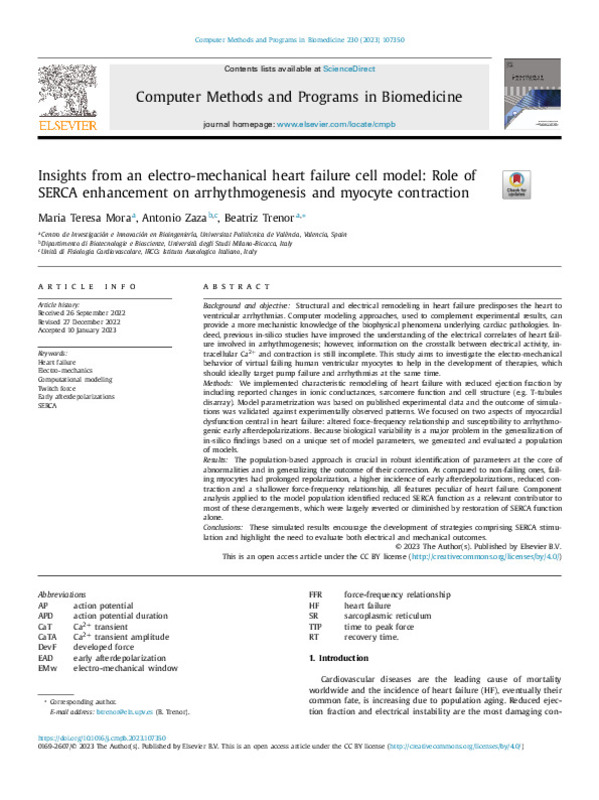JavaScript is disabled for your browser. Some features of this site may not work without it.
Buscar en RiuNet
Listar
Mi cuenta
Estadísticas
Ayuda RiuNet
Admin. UPV
Insights from an electro-mechanical heart failure cell model: Role of SERCA enhancement on arrhythmogenesis and myocyte contraction
Mostrar el registro completo del ítem
Mora-Fenoll, MT.; Zaza, A.; Trenor Gomis, BA. (2023). Insights from an electro-mechanical heart failure cell model: Role of SERCA enhancement on arrhythmogenesis and myocyte contraction. Computer Methods and Programs in Biomedicine. 230:1-12. https://doi.org/10.1016/j.cmpb.2023.107350
Por favor, use este identificador para citar o enlazar este ítem: http://hdl.handle.net/10251/191669
Ficheros en el ítem
Metadatos del ítem
| Título: | Insights from an electro-mechanical heart failure cell model: Role of SERCA enhancement on arrhythmogenesis and myocyte contraction | |
| Autor: | Zaza, Antonio | |
| Entidad UPV: |
|
|
| Fecha difusión: |
|
|
| Resumen: |
[EN] Background and objective: Structural and electrical remodeling in heart failure predisposes the heart to
ventricular arrhythmias. Computer modeling approaches, used to complement experimental results, can
provide a ...[+]
|
|
| Palabras clave: |
|
|
| Derechos de uso: | Reconocimiento (by) | |
| Fuente: |
|
|
| DOI: |
|
|
| Editorial: |
|
|
| Versión del editor: | https://doi.org/10.1016/j.cmpb.2023.107350 | |
| Código del Proyecto: |
|
|
| Agradecimientos: |
This work received funding for open access charge: CRUE Universitat Politècnica de València. The project was supported by the European Union's Horizon 2020 research and innovation programme under grant agreement No 101016496 ...[+]
|
|
| Tipo: |
|









